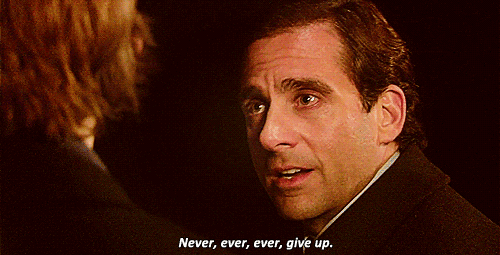During orientation, I tell all of my students to fail miserably — like fall-on-your-face-so-hard-it-hurts kind of failure.
They all laugh half-heartedly before I repeat, “No, I really want you to fail.”

I think this awkward laughter comes from students being socialized not make mistakes. We’re expected to only celebrate winning results, not the journey it takes to achieve them.
And although there may be little room for failure inside the learning environment, we can promote exploration and play through co-curricular activities. Through feedback, we can convey to college students that it is okay to try and fail.
Being unafraid to try means you believe your worth is not tied to the outcome of a test, a relationship, a social media post, or a work deliverable. This notion requires a commitment to unlearning lessons about failure, reflectively inwardly, and getting comfortable with expressing vulnerability.
I am planning a Fail Forward Symposium for my institution’s business school to help students — and our institutions as a whole — be less afraid of failure.
The symposium will include panel discussions with industry leaders and alumni, along with coaching sessions on resilience. Hopefully, this will foster empathy and exploration, while normalizing failure in order to enhance students’ leadership development.
I have three major goals for the symposium, which I have turned into tips for you to encourage failure in your own learning experiences with students.
3 Opportunities
1. Create Multiple “At Bats”
How often do you voluntarily put yourself in a situation in which you don’t know what you’re doing? Well, students do this all the time by virtue of attending higher education institutions in order to become experts on specific subject matters. They’re saying, “I don’t know what I’m doing, but I want to learn.”
In order to promote lifelong student learning, we need to teach our campus communities how to put themselves out of their comfort zones and to allow themselves to be curious.

The key is to create opportunities for students to have multiple “at bat” moments. If they only try once, the odds of failing will be pretty high. Think about how you can shift your pedagogy while onboarding students for leadership or employment roles.
For example, when I worked in an office of student activities, we had student workers staffing our main reception area throughout the day. Those students were in a high traffic area and had to solve lots of issues on the fly.
In student staff training, you could create simulations to allow students to practice how they would handle situations that have previously occurred. This will allow ample opportunities for students to practice skills and receive performance feedback. It will also promote active learning of the valuable process of receiving feedback and implementing that into skill development.
The more times you try, the more times you will fail — which, in turn, will build up a tolerance for failure.
2. Reframe
In Designing Your Life: How to Build a Well-Lived, Joyful Life, authors Bill Burnett and Dave Evans talk about how anyone can reframe failure to inspire innovation. Reframing failure is how we can help students get unstuck with a problem or open them up to try.
The authors go on to state that reframing problems or failure allows people to “step back, examine biases, and open up new solution spaces”.
You can even help students think about shifting their mindsets and reframe how they refer to failure in coaching conversations. Asking questions like, “what is a barrier to trying?” or “what evidence do you have that you will fail?”
By using other words for failure, it gives less power and weight to the word. I even like to think of FAIL as an acronym for First Attempt in Learning.
Here are a few other words you can use instead:
- Prototype
- Chance
- Growth Opportunity
- Innovation
By reframing the language around the concept of failure, you can move from a fixed mindset to a growth mindset.

3. Celebrate
Once you have helped students reframe failure, celebrate it!
Think about how you can create space and reflection for failure in your work. One way could be admitting your own failures to help students recognize that it’s a normal part of life.
Here are some ways to celebrate mistakes with students:
- At a meeting, or online discussion, ask each student to share a misstep about a recent program, event, meeting, or other responsibility. After each person shares their story and what they gained from the situation, encourage everyone else to clap. Cheer on that learning moment!
- Help students identify a new skill they want to acquire, such as social media content development, project management tools, or budgeting. Then see how you can integrate that into your work with them. This allows students to have “at bats” in a low-risk environment with positive feedback.
- Instead of giving kudos for good things, make a chart for failures. Give out gold stars for what students learned in the process of the mistake.
Failure is proof that you tried, and with that comes an incredible opportunity for growth and development. It is a normal part of life, and how we as educators approach it models to students that it is OK to try even if, along the way, we will fail miserably.

We’d love to hear about your favorite failures or what you are doing to normalize failure with your students. Connect with us on Twitter @themoderncampus.





